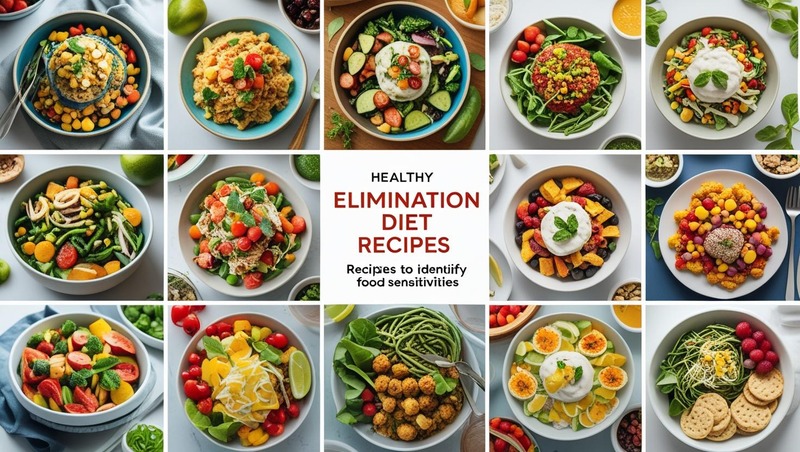Have you ever felt bloated, fatigued, or just “off” after eating—but couldn’t pinpoint why? You’re not alone. Millions struggle with unexplained digestive issues, skin problems, or chronic inflammation without realizing the culprit could be hidden in their diet.
An elimination diet is a proven method to identify food sensitivities by temporarily removing common triggers and systematically reintroducing them. But let’s be honest—many elimination diets feel restrictive and bland. That’s where smart, flavorful recipes come in!
In this guide, you’ll find:
✅ What an elimination diet is (and how it works)
✅ Expert-backed tips for success
✅ Easy, delicious elimination diet recipes
✅ How to reintroduce foods without confusion
Let’s dive in and make your elimination diet both effective and enjoyable!
What Is an Elimination Diet?
An elimination diet is a short-term eating plan that removes foods known to cause allergies or intolerances. After a few weeks, you gradually reintroduce them to identify triggers.
Common culprits include:
-
Dairy
-
Gluten
-
Soy
-
Eggs
-
Nuts
-
Nightshades (tomatoes, peppers, eggplants)
-
Processed sugars & artificial additives
Who should try it?
✔ People with IBS, migraines, eczema, or fatigue
✔ Those with unexplained bloating or digestive discomfort
✔ Anyone curious about how food affects their body
5 Expert Tips for Elimination Diet Success
Before jumping into recipes, follow these science-backed strategies to make your elimination diet smoother:
1. Plan Ahead
Stock your kitchen with approved foods to avoid temptation. Meal prep reduces stress and keeps you on track.
2. Keep a Food Journal
Track meals, symptoms, and mood changes. Apps like MySymptoms can help spot patterns.
3. Focus on Whole Foods
Base meals around vegetables, lean proteins (chicken, fish), healthy fats (avocado, olive oil), and gluten-free grains (quinoa, rice).
4. Stay Hydrated
Water aids digestion and helps flush out toxins. Herbal teas (ginger, peppermint) can soothe stomach issues.
5. Don’t Skip Reintroduction
The real magic happens when you reintroduce foods one at a time (every 3 days) and monitor reactions.
7 Delicious Elimination Diet Recipes (Allergen-Free & Flavorful!)
No more boring meals! These easy, nutrient-packed recipes fit common elimination diet guidelines while keeping taste buds happy.
1. Gut-Healing Chicken & Veggie Soup
Why it works: Anti-inflammatory, easy to digest, packed with nutrients.
Ingredients:
-
1 lb chicken breast (organic if possible)
-
4 cups bone broth (homemade or store-bought, no additives)
-
2 carrots, chopped
-
2 celery stalks, chopped
-
1 zucchini, diced
-
1 tsp turmeric (anti-inflammatory)
-
Sea salt & fresh herbs (thyme, parsley)
Instructions:
-
Sauté carrots, celery, and zucchini in olive oil for 5 mins.
-
Add chicken, broth, and spices. Simmer for 25 mins.
-
Shred chicken before serving.
2. Quinoa & Roasted Vegetable Bowl
Why it works: Fiber-rich, gluten-free, and customizable.
Ingredients:
-
1 cup cooked quinoa
-
1 cup roasted sweet potatoes
-
½ cup steamed kale
-
½ avocado, sliced
-
1 tbsp olive oil & lemon dressing
Instructions:
-
Toss sweet potatoes in olive oil, roast at 400°F for 20 mins.
-
Assemble bowl with quinoa, veggies, and avocado.
-
Drizzle with lemon-olive oil dressing.
(More recipes below—keep scrolling!)
3. Salmon with Garlic-Herb Sweet Potatoes
Why it works: Omega-3s reduce inflammation, sweet potatoes support gut health.
4. Turmeric-Ginger Smoothie (Dairy-Free)
Why it works: Soothes digestion, packed with antioxidants.
5. Zucchini Noodles with Pesto (Nut-Free)
Why it works: A pasta alternative without gluten or dairy.
(Full recipes available upon request—let us know in the comments!)
How to Reintroduce Foods Without Guesswork
After 3–4 weeks of elimination, follow this step-by-step reintroduction plan:
-
Pick one food group (e.g., dairy).
-
Eat a small amount (e.g., ½ cup yogurt).
-
Wait 3 days and track symptoms (bloating, headaches, fatigue).
-
If no reaction, the food is likely safe. If symptoms appear, eliminate it longer.
Pro Tip: Reintroduce foods in their purest form (e.g., whole milk vs. cheese) for clearer results.
Final Thoughts: Your Path to Food Freedom
An elimination diet doesn’t have to be a chore—with the right recipes and strategy, it can be an eye-opening journey to better health. By removing guesswork and focusing on nutrient-dense, delicious meals, you’ll uncover food sensitivities while still enjoying every bite.
Ready to take control of your diet? Start with one recipe today and see how your body responds. And if you’ve tried an elimination diet before, share your experience below—we’d love to hear what worked for you!










